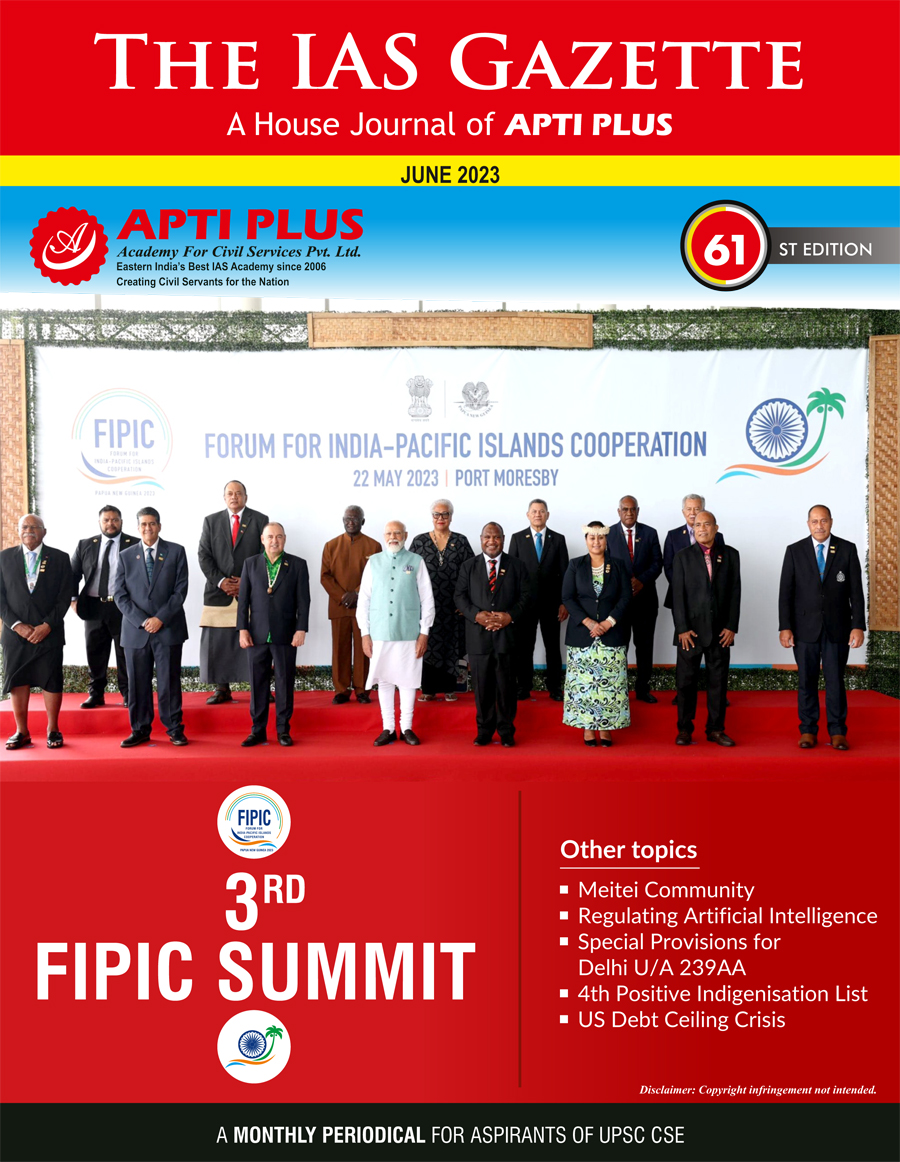
Disclaimer: Copyright infringement not intended.
Context
- In G-7 Summit, hosted by Japan, countries discussed on regulations for a responsible development and management of Generative AI.
- The discussions surrounded on the values of freedom, democracy, and preserving human rights.
Other Details
- Leaders showed an intension to make regulation based on shared norms, principles and guiding values.
- The discussion was based on the theme that AI should be human-centric and trustworthy.
- The common guideline allowed G-7 countries to fair use of copyrighted materials associated with machine learning.
- However nations can make their own guidelines and regulations to control the development of AI.

Hiroshima AI process (HAP)
- It is a process, a G7 nations initiative, that acknowledge and understands the opportunities and challenges of generative AI and related governance of AI.
- It also includes discussions on principles or rules to safeguard intellectual property rights by avoiding its violation. Hence it is expected to bring clarity on fair use.
- It highlights the urgent need for regulation to make AI more responsible and trustworthy to humans.
- It will work on to make AI more fair, open, accountable, transparent and safe.
- This process also takes an account of policy guidelines on AI and analyses policy impact on developments, on conducting practical projects.
- It calls for cooperation of multiple stakeholders including support of Organisation for Economics Co-operation and Development (OECD) and Global Partnership on AI (GPAI).
- First meeting under HAP was held on May 30, 2023.
|
Fair use in IPR
- Fair use refers to permission to use any copyrighted/patented or other protected work of any other person/organization, who owns such works, in a limited manner.
- The activities which could be allowed under fair use are criticism, comments, news reporting, teaching, scholarship, or research and scholarship work.
- The use should not be commercial in nature.
- It is generally decided on the basis of –
- Nature and objects of the copyrighted work,
- Purpose and character of use
- The quantity and value of the materials used, and
- The impact on the sale or profits
|
|
What is Generative AI
- It is a type of artificial intelligence systems which learn patterns and structure of data and adapt to new situations quickly. These algorithms and technologies have the ability to generate new content, including audio, code, images, text, simulations, and videos which may never exists in real life.
- For instance – ChatGPT, DALL-E etc.
- An image of pink donkey or blue Tajmahal can be generated using such technologies
- This type of AI can be used in various industries for instance-
- Art and Literature
- Finance and Banking
- Coding and Development of software
- Health and education sectors
- Marketing of products
- Gaming industry etc.
|
Must read Articles:
Organisation for Economic Co-operation and Development (OECD):
https://www.iasgyan.in/daily-current-affairs/organisation-for-economic-cooperation-and-development-oecd
Global Partnership on Artificial Intelligence:
https://www.iasgyan.in/daily-current-affairs/global-partnership-on-artificial-intelligence
Intellectual Property Rights (IPR)
https://www.iasgyan.in/daily-current-affairs/intellectual-property-rights-ipr
Artificial Intelligence
https://www.iasgyan.in/blogs/basics-of-artificial-intelligence
https://www.iasgyan.in/blogs/artificial-intelligence-in-agriculture
Artificial Intelligence Regulations across the world:
https://www.iasgyan.in/daily-current-affairs/ai-regulation-across-the-world
|
PRACTICE QUESTION
From complex processes of weather and pharmaceutical modelling, to write a simple e-mail to office informing about sick leave, use of Artificial Intelligence is becoming indispensable. Explain.
Also mention the challenges and ethical concerns surrounding it. (250 words)
|

https://epaper.thehindu.com/ccidist-ws/th/th_delhi/issues/39632/OPS/G7ABBQ5J2.1+G9KBBQBEV.1.html




